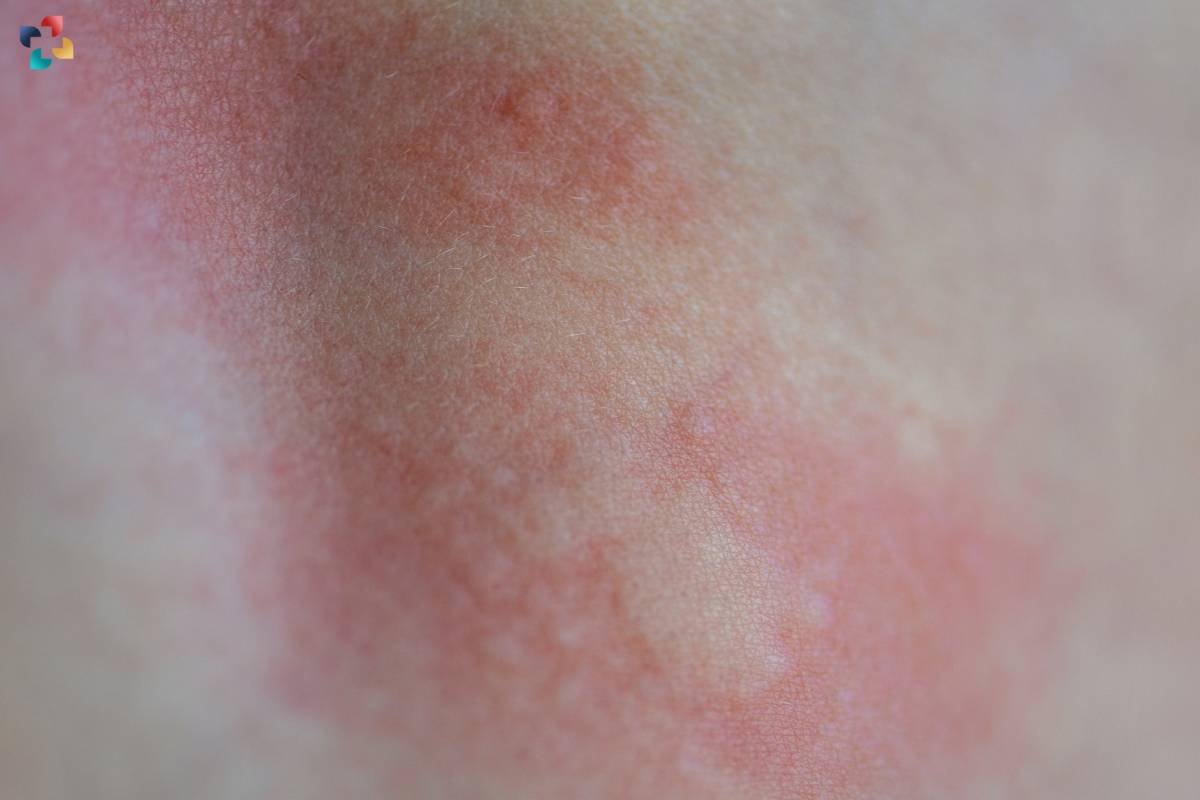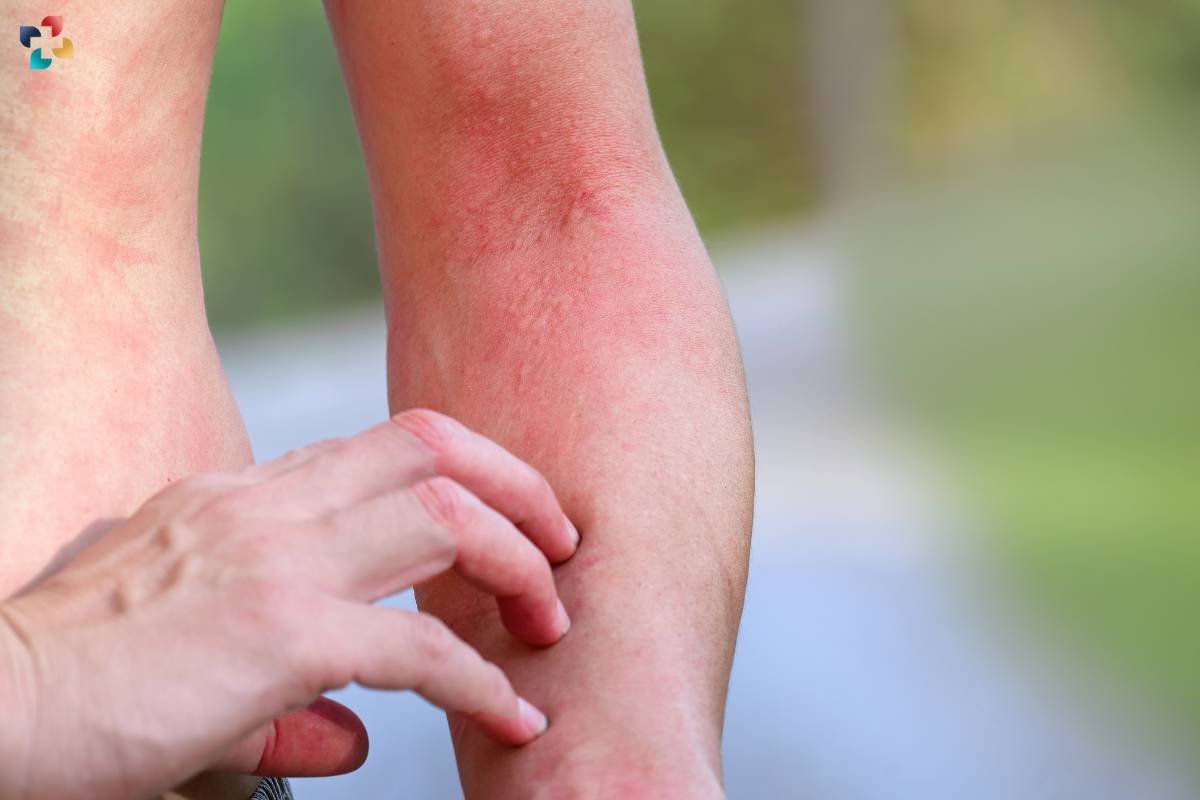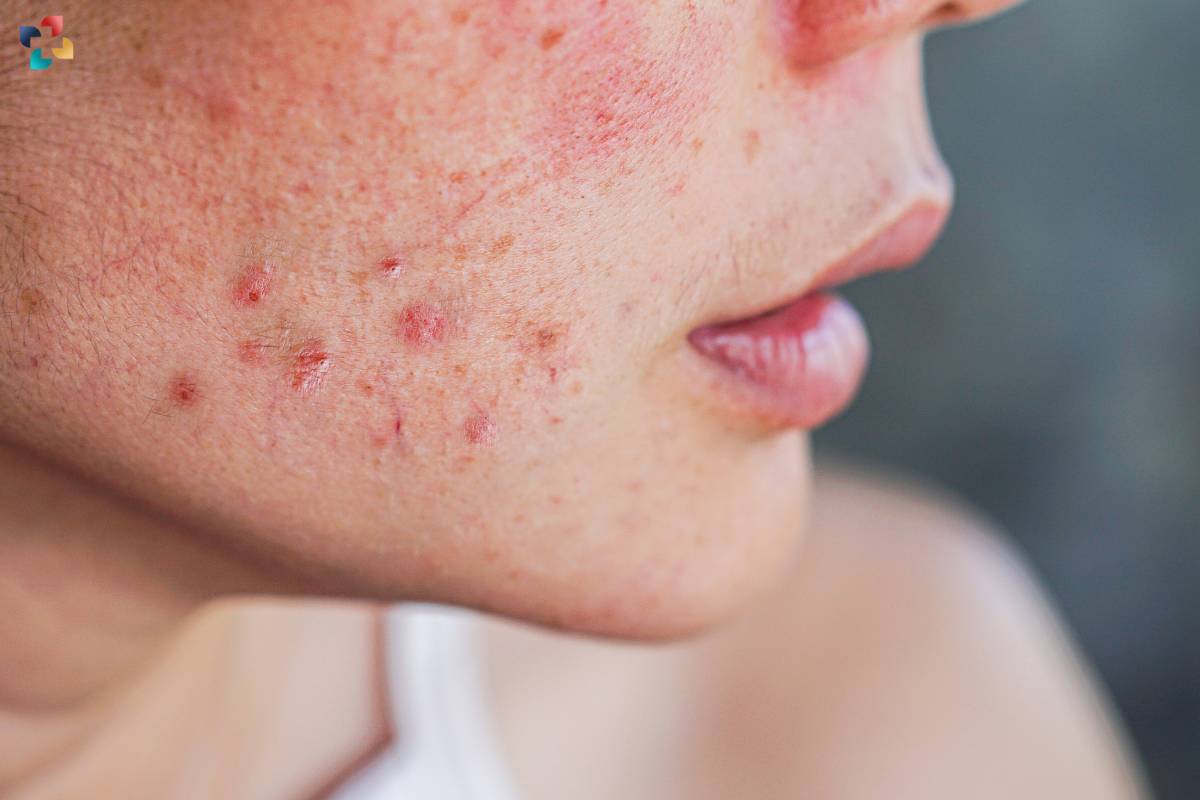Table of Contents
Introduction:
Red spots on the skin can be a source of concern and discomfort for many individuals, often prompting questions about their underlying causes and appropriate treatment options. While they can be benign and temporary, they may also indicate underlying medical conditions that require attention. In this comprehensive guide, we delve into the various causes, symptoms, and treatment options for red spots on the skin, empowering readers to better understand and address this common dermatological concern.
Understanding Red Spots on Skin:
Red spots on the skin, also known as erythema or skin lesions, can manifest in a variety of shapes, sizes, and patterns. They may appear as flat or raised areas, and their color can range from bright red to deep purple, depending on the underlying cause. They can be caused by a wide range of factors, including inflammation, infection, allergic reactions, and underlying medical conditions.

Red spots on the skin can be a source of discomfort and concern, as they often signify an underlying issue with the skin or overall health. These spots may vary in appearance and texture, with some being smooth and flat, while others are raised or bumpy. The color of red spots can also provide clues about their cause, with shades ranging from a vibrant red to a darker, more purplish hue.
Understanding the diverse range of factors that can contribute to red spots on the skin is crucial for accurate diagnosis and effective treatment. Let’s explore some of the common causes and characteristics of red spots on the skin in greater detail.
Causes of Red Spots on Skin:
Red spots on the skin can be a cause of concern for many individuals, often prompting questions about their underlying causes and potential implications. These spots can appear suddenly or develop gradually, and their presence may be accompanied by itching, discomfort, or concern about their appearance.
Understanding the various causes of red spots on the skin is essential for accurate diagnosis and appropriate treatment. In this section, we will explore some of the most common causes of red spots on the skin, ranging from allergic reactions and infections to skin conditions and environmental factors. Let’s delve into these causes to gain a better understanding of this dermatological issue.
1. Allergic Reactions:

Red spots on the skin can occur as a result of allergic reactions to foods, medications, cosmetics, or environmental triggers. Common allergens include peanuts, shellfish, antibiotics, and pollen.
2. Dermatitis:
Dermatitis refers to inflammation of the skin, which can cause redness, itching, and the formation of red spots or patches. Common types of dermatitis include contact dermatitis, atopic dermatitis (eczema), and seborrheic dermatitis.
3. Infections:
Bacterial, viral, and fungal infections can lead to the development of red spots on the skin. Examples include impetigo, herpes simplex virus (cold sores), and ringworm.
4. Insect Bites and Stings:
Red spots on the skin can result from insect bites or stings, such as those from mosquitoes, bees, ants, or ticks. These spots may be accompanied by itching, swelling, and pain.
5. Skin Conditions:
Various skin conditions can cause red spots to appear on the skin, including rosacea, psoriasis, acne, and pityriasis rosea.

5 Pro Tips to Kick Start Your Skincare Routine
The term “skincare regimen” may refer to a variety of activities depending on the person using it. For other people, it may involve little more than washing their face with water and a little amount of soap and then declaring themselves to be finished.
Symptoms of Red Spots on Skin:
The symptoms associated with red spots on the skin can vary depending on the underlying cause. Common symptoms may include:
- Redness or discoloration of the skin
- Itching, burning, or stinging sensations
- Swelling or inflammation
- Pain or tenderness
- Blistering or crusting
Treatment Options for Red Spots on Skin:

1. Topical Treatments:
Topical treatments, such as corticosteroid creams, antihistamines, or anti-inflammatory ointments, may help alleviate symptoms associated with red spots on the skin, such as itching, inflammation, and redness.
2. Oral Medications:
In some cases, oral medications, such as antihistamines, antibiotics, or antifungal agents, may be prescribed to treat underlying infections or inflammatory conditions contributing to red spots on the skin.
3. Moisturizers and Emollients:
Applying moisturizers and emollients to the skin can help hydrate and soothe dry, irritated skin, reducing the appearance of red spots and promoting healing.
4. Avoidance of Triggers:
Identifying and avoiding triggers that exacerbate red spots on the skin, such as certain foods, medications, or environmental allergens, can help prevent flare-ups and minimize symptoms.
5. Lifestyle Modifications:
Making lifestyle modifications, such as practicing good hygiene, wearing protective clothing, and avoiding excessive sun exposure, can help reduce the risk of developing red spots on the skin and promote overall skin health.
Conclusion:
In conclusion, red spots on the skin can be a common dermatological concern with a wide range of potential causes and symptoms. While many cases of red spots on the skin may be benign and self-limiting, it is essential to consult with a healthcare provider for proper diagnosis and treatment, especially if red spots are persistent, widespread, or accompanied by other concerning symptoms. By understanding the underlying causes, symptoms, and treatment options for red spots on the skin, individuals can take proactive steps to address this dermatological issue and maintain healthy, vibrant skin.
FAQs
1. What are red spots on the skin, and what causes them?
Red spots on the skin, also known as erythema or skin lesions, can be caused by a variety of factors, including inflammation, infection, allergic reactions, and underlying medical conditions. These spots may appear as flat or raised areas and can range in color from bright red to deep purple, depending on the underlying cause.
2. Are red spots on the skin a cause for concern?
In many cases, red spots on the skin are benign and temporary, resulting from minor irritations or reactions to environmental factors. However, persistent or widespread red spots, especially those accompanied by other symptoms such as pain, itching, or changes in size or shape, may warrant further evaluation by a healthcare professional.
3. How can I prevent red spots on my skin?
Preventing red spots on the skin often involves practicing good skincare habits, such as regularly cleansing and moisturizing the skin, avoiding harsh chemicals or irritants, and using sunscreen to protect against sun damage. Additionally, identifying and avoiding triggers such as certain foods, medications, or environmental allergens can help prevent flare-ups of red spots.
4. When should I seek medical attention for red spots on my skin?
It is advisable to seek medical attention for red spots on the skin if they are persistent, widespread, or accompanied by other concerning symptoms such as fever, swelling, or difficulty breathing. Additionally, if red spots develop suddenly and are associated with severe pain or discomfort, prompt medical evaluation is recommended.
5. What treatments are available for red spots on the skin?
Treatment for red spots on the skin depends on the underlying cause. In many cases, conservative measures such as topical creams, antihistamines, or moisturizers may help alleviate symptoms and promote healing. However, more severe or persistent cases may require prescription medications, oral treatments, or procedures such as laser therapy or corticosteroid injections. It is essential to consult with a healthcare professional for personalized treatment recommendations based on individual circumstances.







